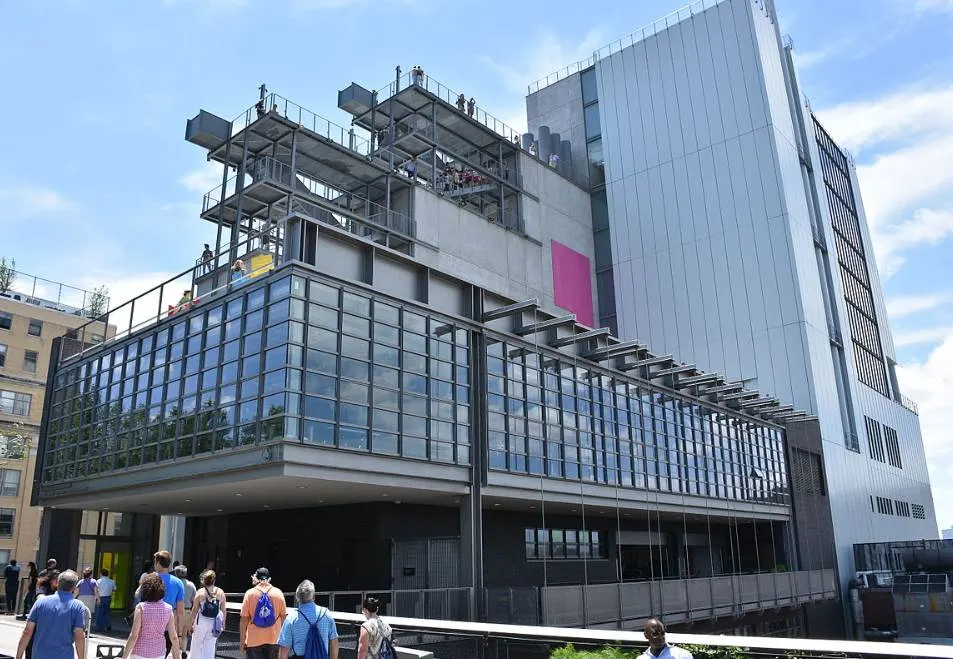If there’s one painting that visualizes the economic struggle at the start of one of the darkest economic periods in American history, then this is the one.
Edward Hopper (1882-1967) was an American painter who focused on realistic depictions of landscapes and urban life.
During his long career, he produced some of the best-recognized paintings in American history, including a work depicting a remarkable New York City scene.
In this article, I’ll take a closer look at some of the most interesting facts about Early Sunday Morning, one of Hopper’s most iconic paintings.
1. It was completed shortly after Hopper earned his artistic breakthrough
The career of Edward Hopper didn’t take off for a very long time, and that’s mainly because he had to work as an illustrator to support himself for many years.
Not only did he lack inspiration, but he also found himself in a constant state of depression during his twenties because things simply didn’t happen.
This all changed when he re-met his future wife Josephine Nivison in 1923, a young woman with whom he went to school before.
Jo was a social butterfly who managed to arrange Hopper’s first exhibition at the Brooklyn Museum in 1923 and this marked the start of his successful career.
He completed Early Sunday Morning in 1930, several years after he finally managed to find his artistic purpose and actually started selling paintings.
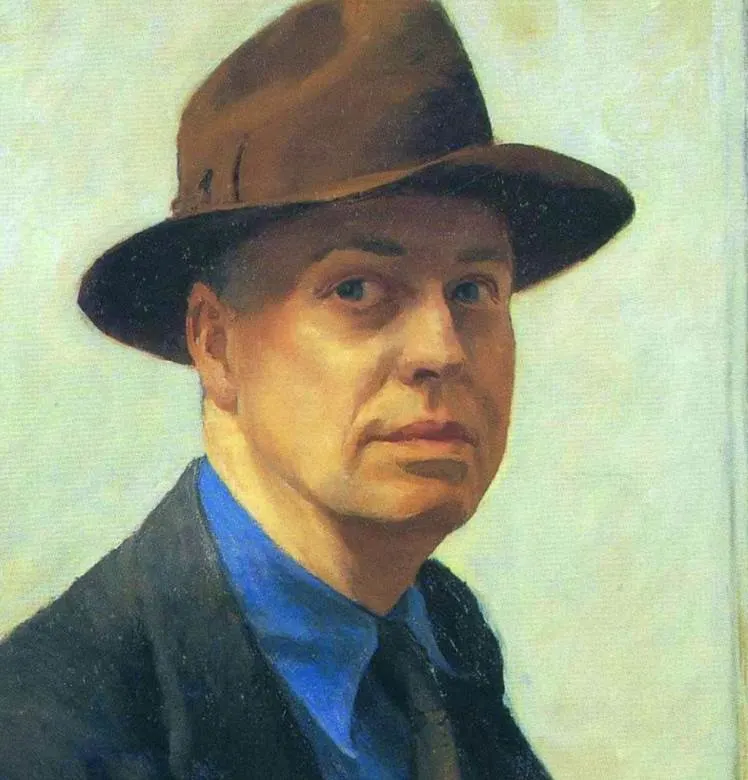
2. It depicts a row of shops on a major avenue in New York City

This remarkable work of art depicts a row of businesses on Seventh Avenue, a major avenue in Manhatten, New York City.
Hopper described this work as a nearly perfect representation of Seventh Avenue, but he did take some liberties with the actual depiction as you’ll soon find out.
The vivid red colors of the buildings and historic storefronts do make this one of the most iconic paintings in Hopper’s extensive oeuvre.

3. The block was located near Hopper’s studio on the West Side of Manhatten
Seventh Avenue runs north-south in the Western part of Manhatten and this work depicts a rather empty and bleak block.
This was located a few blocks to the west of Hopper’s studio which was located just north of Washington Square Park, a large public park in the historic Greenwich Village.
These buildings were torn down shortly after Hopper completed this work but they were captured shortly before this happened.
The green fire hydrant, the letters on the windows, the architectural details, and the rather small stores are all elements that were present when Hopper painted this work.

4. It’s believed to be a representation of the economic situation in 1930
The Great Depression started with the Wall Street Stock Exchange Crash in 1929 and it lasted about a decade until 1939.
Massive unemployment, thousands of businesses closing down around the world, and high inflation made this a very difficult period in history, especially compared to the 1920s which are known as the Roaring Twenties.
Many art historians agree that Hopper wanted to paint a visual representation of the effect of the Great Depression on the city.
There’s hardly a sign of life on this street and apart from one door that’s open, most shops on this block appear to be abandoned.
The entire street looks deserted and this was most likely how it was in 1930 as well.
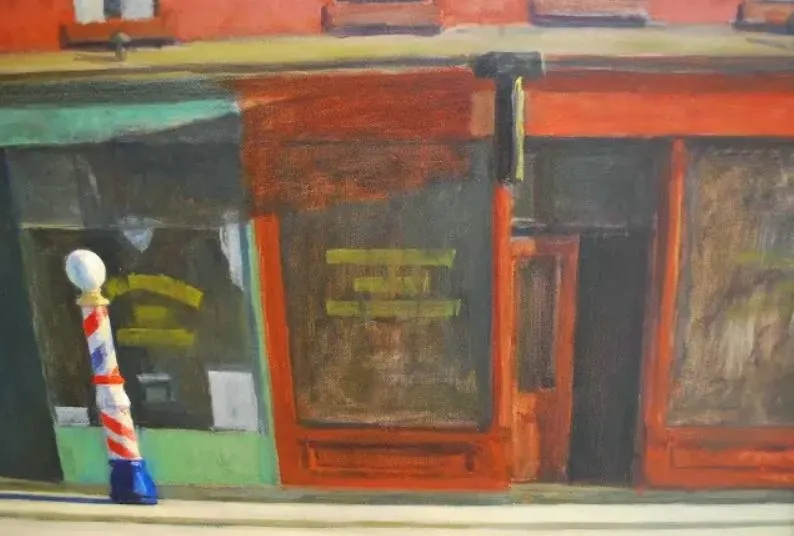
5. The painting’s title wasn’t the original chosen by Hopper
One of the most interesting facts about Early Sunday Morning is that this wasn’t the original title of the work.
Hopper referred to it as “Seventh Avenue Shops” when he completed it and remarked that somebody added the Sunday to it later on.
Not only is there no indication that this scene takes place on a Sunday morning, but the light and shadow in this work also aren’t realistic.
As I mentioned, Seventh Avenue runs north to south in Manhattan, and the shadows cast would have been impossible on a Sunday morning.
This is the major liberty that Hopper took with this work, and he did so to emphasize the emptiness of the street.

6. It’s impossible to read the letters on the storefronts
If you take a closer look at the shops and compare it with the real block on Seventh Avenue then you’ll notice that the doorways are slightly smaller in the painting.
The most notable change upon closer inspection is the fact that the yellow letters on the store’s windows are illegible.
This doesn’t appear to be the case when you look at the painting from a distance, but when you zoom in, you notice that these letters consist of nothing more than some patches of yellow paint.
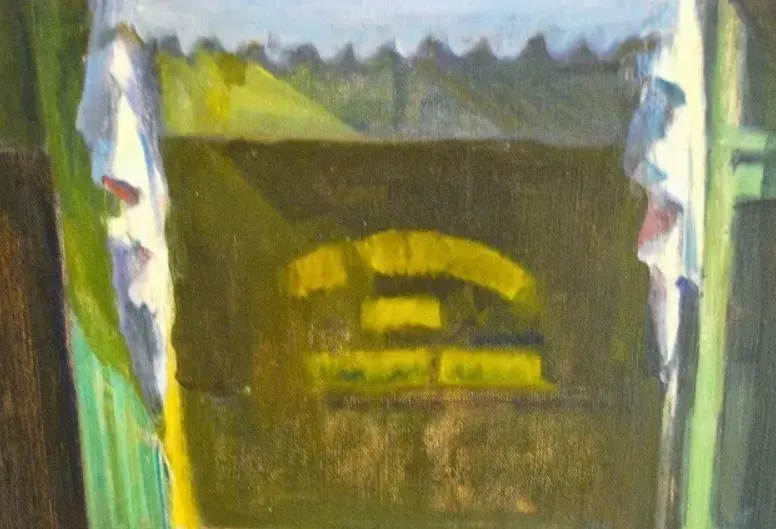
7. How big is Early Sunday Morning by Edward Hopper?
The painting has a very horizontal composition and is almost twice as long as it’s tall. This allowed Hoper to capture the entire block with stores without any distractions.
Early Sunday Morning by Edward Hopper is a medium-sized oil on canvas painting that has dimensions of 89.4 × 153 centimeters (35.2 x 60 inches).
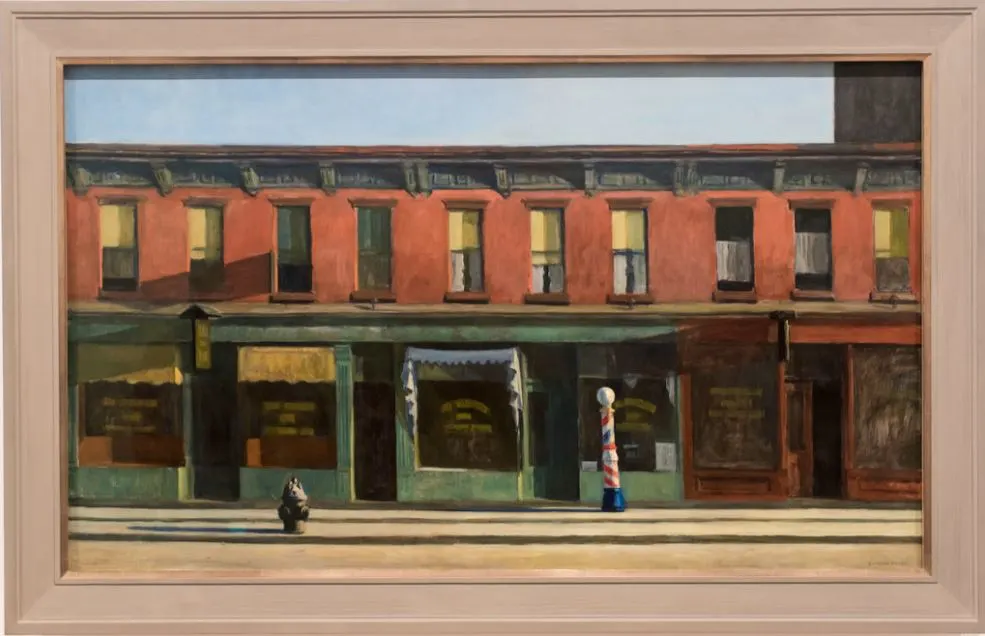
8. Where is Hopper’s painting located today?
Hopper’s masterpiece is one of the numerous paintings that he was able to sell rather quickly after it was completed.
It was bought by American art collector Gertrude Vanderbilt Whitney (1875-1942) for $2,000 just a few months after it was completed.
This was a lot of money at the time and the equivalent of over $35,000 today. It shows how successful Hopper already was at the time.
That same year, the Whitney Museum was established, and Early Sunday Morning was one of the works that formed the initial collection of this museum in Manhattan, New York City.
